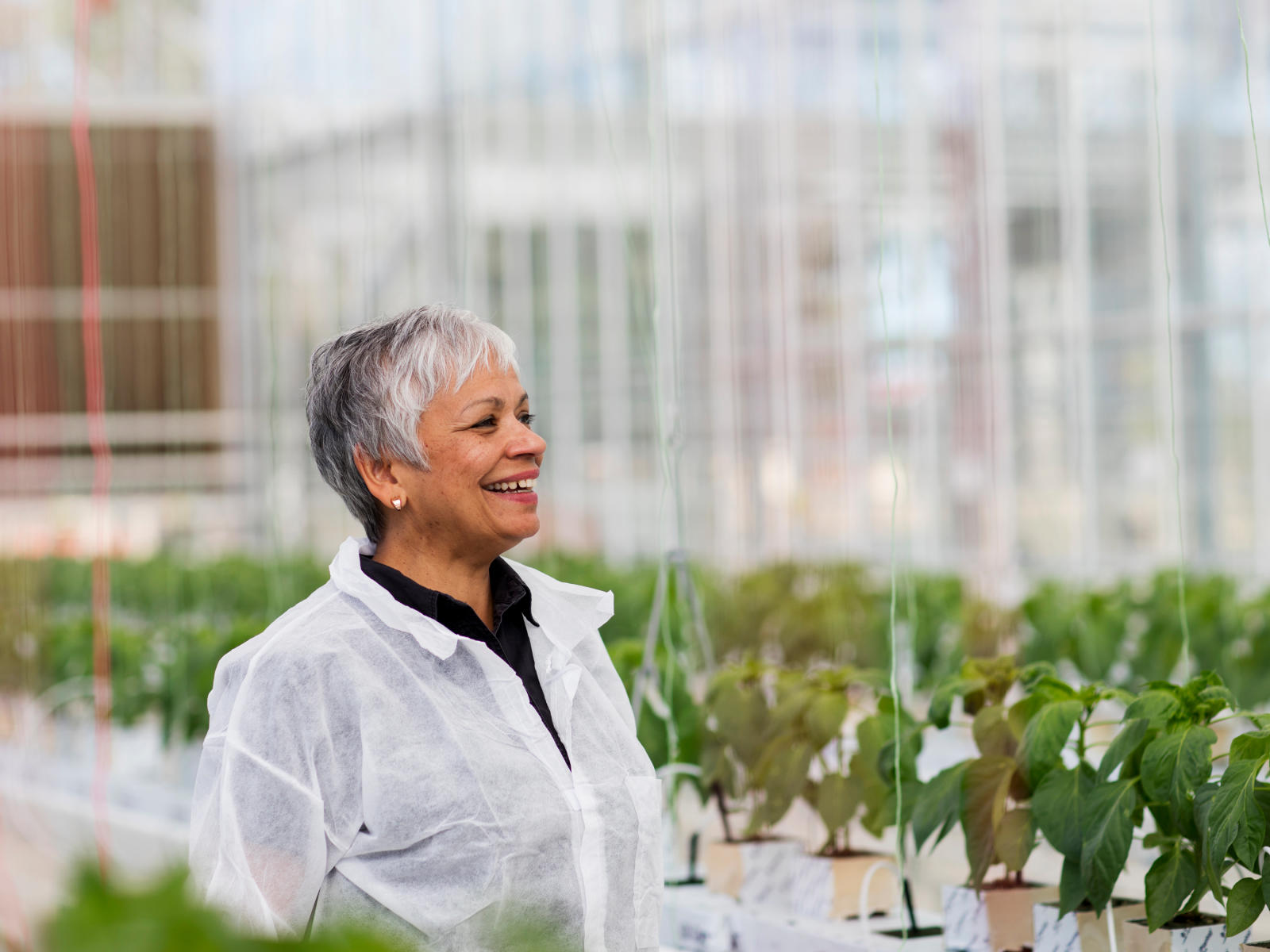Worth $250 million at the farm gate in 2017, Australia’s blueberry industry is forecast to expand considerably in coming years. While the industry target is to export 20 per cent of production by 2022, increasing production of lower-priced South American berries could make this difficult. Maintaining our global competitiveness will lie in producing blueberries with superior quality and health benefits. This will enable Australian producers to capitalise on the global ‘health and wellness’ megatrend identified in CSIRO’s ‘Food and Agribusiness Roadmap: unlocking value‑adding growth opportunities for Australia’ – a trend the COVID-19 pandemic has reinforced and accelerated.
Identifying the specific production conditions that maximise key ‘nutraceutical’ traits in the fruit of blueberry crops grown under cover will help Australia’s berry producers and processors market their product in high-value ‘health and wellness’ markets, domestically and worldwide.
Paddock vs polytunnel: which blueberries are more potent?
Studies have shown that environmental factors including sunlight (solar radiation), temperature, water and salinity stress can cause health-promoting flavonoids to accumulate in many fruits, including blueberries.
Increasingly, however, Australia’s blueberries are grown in polytunnels. While these enable improved control of fertiliser application, irrigation and environmental conditions, they have some drawbacks.
Compared to open-field, polytunnel production has been linked with lower antioxidant levels in the resulting fruit. This is likely due to reduced light transmission and the fact that plants under cover experience only mild environmental stresses, hence biosynthesise fewer flavonoids and other antioxidants.
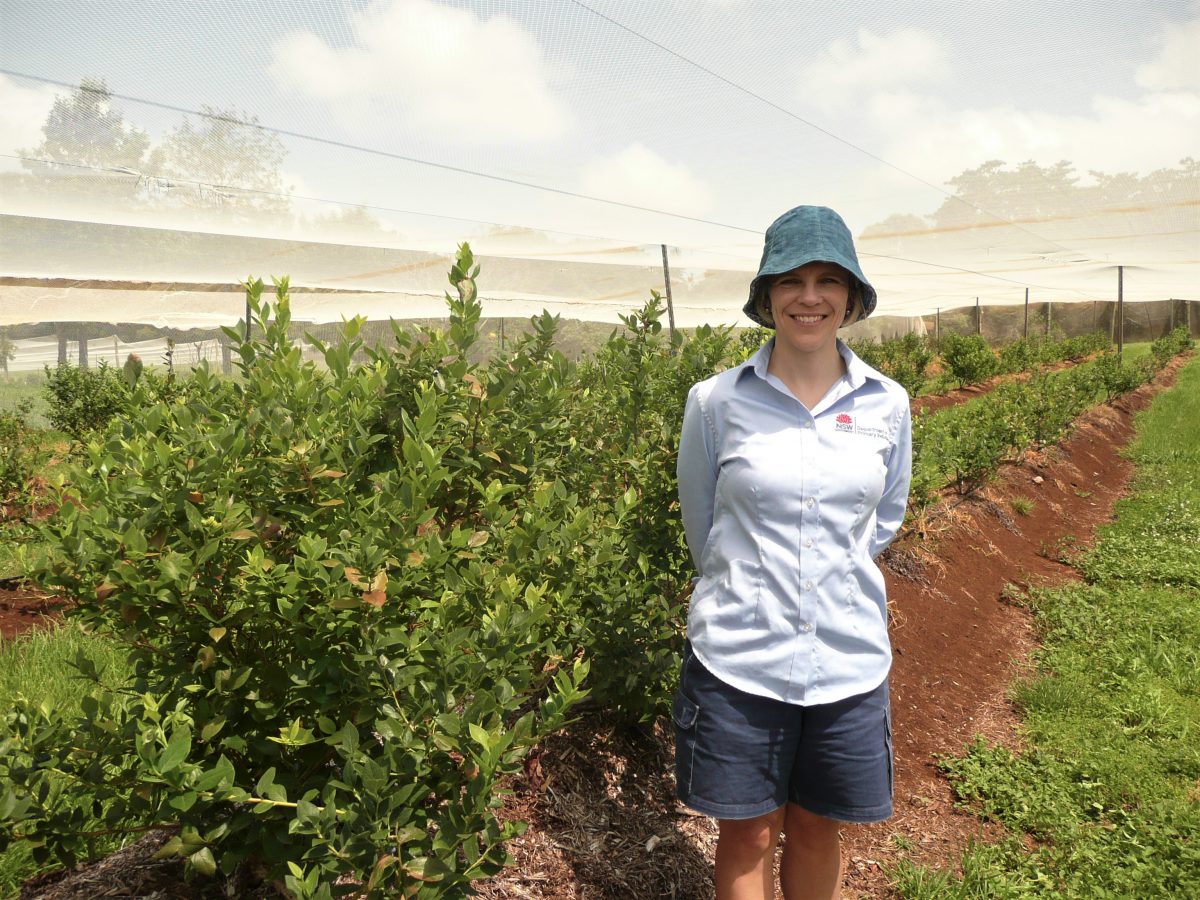
NSW Department of Primary Industries’ Sophie Parks with a field-grown blueberry crop. Credit: NSW DPI
Increasing berries’ nutriceutical power: the hypothesis
A new CRC project, aptly titled ‘Optimising blueberry fruit nutritional quality using controlled spectra and mild stress treatment via polytunnel innovation’ – the ‘Blueberry nutritional optimisation’ project, for short – aims to improve our understanding of how the phenolic content and other nutritional traits (vitamin C, organic acids, minerals) in blueberries correlate with growing conditions in Australia.
The project team, led by Professor Priti Krishna at Western Sydney University, along with a PhD student, Senior Research Scientist Sophie Parks from NSW Department of Primary Industries (DPI) and Dr Alexander H. Soeriyadi, Director of LLEAF Pty Ltd, will trial blueberry crops grown in polytunnels under various environmental conditions.
These include controlling the light spectra (using UV-B radiation and patented LLEAF technology, in the form of spectral-selective light luminescent films); and deploying mild abiotic stress (mild salinity) at the fruit-ripening stage – to ascertain the specific conditions that optimise the nutritional qualities of the resulting fruit.
The LLEAF material shifts non-optimal light wavelengths to more optimal ones to enhance plant growth – so RED LLEAF material shifts green (non-optimal) wavelengths to the red (optimal) portion of the light spectrum. Credit: LLEAF Pty Ltd
What is LLEAF technology?
Industry partner in the project, LLEAF Pty Ltd, has developed technology that can enhance the yield of produce grown in indoor grow systems – technology that can be concisely described as luminescent light-emitting agricultural films, hence ‘LLEAF’.
A typical installation of the technology comprises thin, polymer films that are retrofitted to an existing grow system. LLEAF designed its proprietary luminescent dyes to absorb those parts of the solar spectrum that are less active in supporting plant growth and emit significant amounts of supplementary luminescent light at wavelengths more directly supportive of plant growth.
Preliminary results of trials using LLEAF technology indicate that it has various desired effects including, faster, bigger and denser growth, and the ability to induce or inhibit fruiting cycles.
Though trials in strawberries showed that light ratios induced improved yields in strawberries, the LLEAF technology has yet to be tested for its effect on blueberry crop growth, yield and fruit nutritional quality.
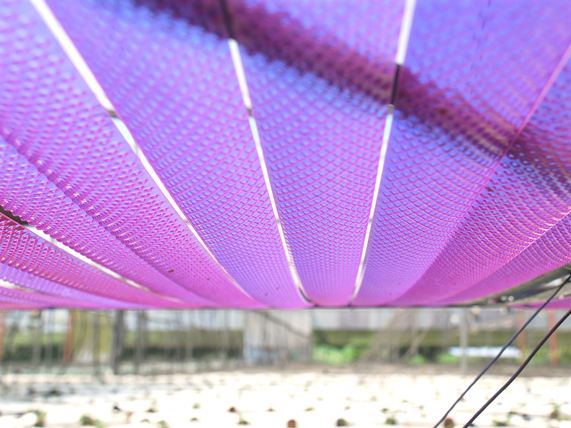
A typical installation of the new LLEAF technology comprises thin, polymer films that are retrofitted to an existing grow system. Credit: LLEAF Pty Ltd
Why stress the plants?
Another way to improve plants’ antioxidant potential is to target secondary metabolite synthesis by exposing plants to mild abiotic stresses. Recent research has shown that numerous polyphenols, including flavonoids, can be induced by salinity stress, a relatively simple approach for enhancing the antioxidant potential of blueberry fruits if trials produce desirable results.
What do the researchers hope to demonstrate?
Once the research team identifies the LLEAF light-spectra combination and abiotic (saline) stress regime that results in the most nutritionally potent polytunnel-grown blueberry fruit, this will form a sound scientific basis for modifying polytunnels accordingly.
Growers who implement these improvements will reap the benefits of growing blueberries in comparatively cheap, low-tech polytunnels while delivering a superior-quality product with proven health benefits.
The more potent health benefits of the Australian high-flavonol berry will distinguish it from its competitors, increasing its appeal in key ‘health and wellness’ markets and justifying a premium price tag.
What’s the broader benefit?
Producing blueberries with superior health benefits such as higher antioxidant levels increases the appeal of the blueberry farming industry in Australia, as it means the resulting blueberries can be sold at a premium.
With consumer interest in the potential health benefits of eating high-flavonol blueberry fruit, higher concentrations of these compounds should be an additional selling point.
The learnings gained in this project could also be usefully applied in blueberry breeding programs going forward.
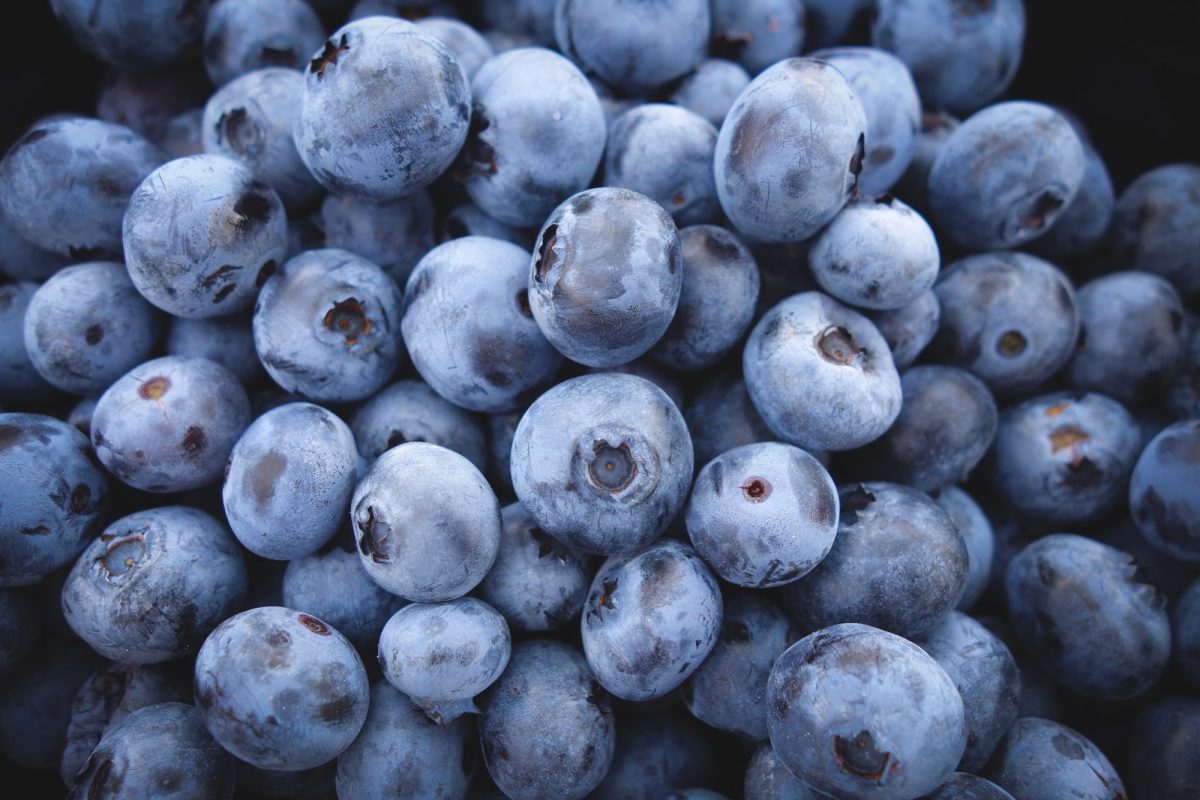
Blueberries contain various phytochemicals of benefit to human health. Credit: Jeremy Ricketts on Unsplash
Why blueberries?
Blueberries, widely touted as a ‘superfood’ and hence increasingly popular with health-conscious consumers worldwide, contain several phytochemicals beneficial to human health. The fruit is high in dietary fibre, vitamin C and a variety of beneficial polyphenols – notably flavonoids (primarily, anthocyanin); proanthocyanidins; flavonols (such as kaempferol, quercetin and myricetin) and phenolic acids (principally, hydroxycinnamic acids).
Flavonoids, along with other polyphenols, act as antioxidants, protecting against the harmful effects of free radicals.
In plants, phenolics and polyphenols are secondary metabolites that defend against environmental stresses that might otherwise result in oxidative damage and homeostatic disruption to the plant. Many plant phenolic compounds scavenge free radicals, acting as natural antioxidants.
Plant phenolics – especially the various polyphenols of the flavonoid group – are now widely acknowledged to have pharmacological properties in humans, including anti-inflammatory, anti-cancer, anti-diabetic, anti-obesity, anti-microbial, anti-allergic, anti-viral, anti-thrombotic, hepato-protective and neuro-protective benefits.
Potent anthocyanin flavonoids account for up to 60 per cent of total polyphenolics in ripe blueberry fruit. As well as anthocyanins, blueberries contain beneficial flavonoid subgroups flavonols (kaempferol, quercetin, myricetin) and flavanols (proanthocyanidins), and phenolic acids (mainly hydroxycinnamic acids).
However, research has shown that polyphenol content in blueberries varies with genetics, environmental conditions and fruit ripening stages, ranging from 48 to 304 mg/100 g of fresh fruit weight.


